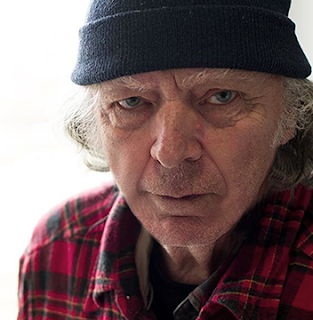Allan MacInnis
Sympathy for the Unabomber
An Interview with James Benning
Starting in March I'm going to post a few of my "greatest hits" here, things not available elsewhere online (to my knowledge) or that I would like to keep "out there in the world." These are things I'm either quite proud of, or think important enough that I'd like them to be read. (Some have been previously published in other places but aren't online at present, as far as I know). I'm going to try to alternate between film-related pieces and music-related. In-between, I may do a bit of personal blogging to track my progress through the system as I begin treatments for squamous cell carcinoma (in my tongue and perhaps elsewhere) - it seems to light a fire under me to put stuff into the world while I can. But there's some stuff that has to be put into the world... starting with this!
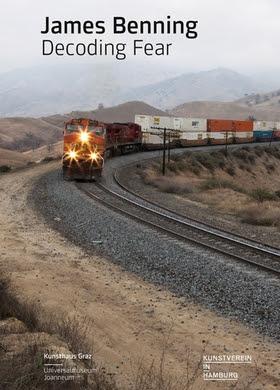
The following is, to my knowledge, my only publication in book form. It took place shortly after a (2013?) VIFF screening of Benning's experimental Unabomber documentary, Stemple Pass, and appeared in 2014 in a softcover gallery catalogue - still available online - to correspond with an exhibition of the work of James Benning, in Austria, with my interview with Benning appearing in German and English. ("Catalogue" is a bit misleading, I guess, because though it was published by a gallery, it is mostly a collection of essays, though there are some photographs therein as well - it's an impressive book!). You can find out more about it here and here, and it looks like you can buy it through Amazon Canada, Thanks to the Vancouver International Film Festival for having brought Benning to my attention (I've written blogpieces here about his films before, which I first experienced at the Vancity Theatre - with 13 Lakes - and the Cinematheque - with RR. He impresses me a lot - and thanks to his connecting me with his gallery, something I began as an email interview I expected to receive no money for whatsoever became one of my best-paid, most impressive publications ever.
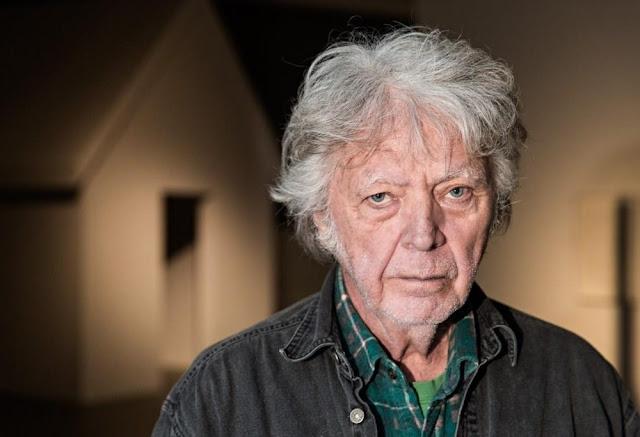
James Benning, The Unabomber, and Stemple Pass: an Interview
By Allan MacInnis
The Vancouver International Film Festival can reliably be counted upon to show the new James Benning film. This is where, in 2005, I first encountered both the filmmaker and his works; he introduced a screening of 13 Lakes, and commented afterwards on the irony of the fact that he had made an environmentally-conscious film that required him to drive all over North America burning fossil fuels. 13 Lakes was shot on film, each shot a single static take, lasting the whole of a reel, of a North American lake. The only sound for the film was ambient, recorded on location, though not all of it was recorded synch; Benning revealed during the Qand A that the train we heard pass in one segment was actually recorded in the same landscape after the camera had stopped rolling, which moved one audience member to great indignation, accusing Benning of “cheating” - as if something in his method seemed to forbid any artifice whatsoever.
Plenty of artifice went into James Benning’s 2012 Unabomber film, Stemple Pass, which played the 2013 Vancouver International Film Festival, but that’s hardly grounds for an objection; it is a crafted work of art - as are all of Benning’s films. The film consists of four static shots, each lasting thirty minutes (Benning’s film practice, since 2009’s Ruhr, has left behind his usual medium of 16mm film; his upgrade to digital allows for longer takes, including his remarkable-sounding single shot documentary Nightfall, mentioned below). The four segments of Stemple Pass show the same forested landscape in different seasons, which play out of order, to maximize the visual difference between them: we see spring, then fall, then winter, and then we end in the summer. Roughly half of each shot is spent listening to Benning, on voice-over, read from selections of the writings of Ted Kaczynski - including journal entries and messages hidden and coded that have never been previously published. The remaining fifteen minutes of the shot are spent listening to ambient sounds. In the right foreground, we see a functional reconstruction of Kaczynski’s cabin, made by Benning as part of his Cabins Project, which also saw him build a reconstruction of Thoreau’s cabin at Walden Pond. There is little sign of human presence for much of the film - though occasionally we hear intruding sounds of cars or helicopters, and we see smoke, in one sequence, rise from the cabin’s chimney (Benning explained in a brief email interview I did with him for the Huffington Post that during that sequence, Fall, he “was inside the cabin keeping the fire burning while the camera was unattended filming from the porch of my main house,” above.)
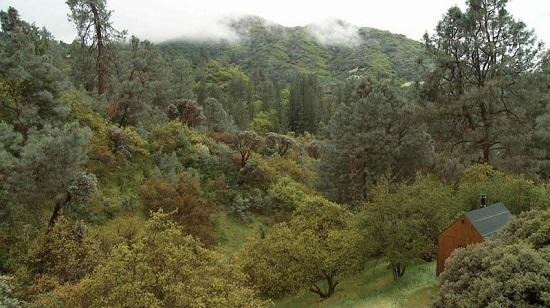
Kaczynski has long been a fascinating figure for me - actually, since seeing a previous VIFF entry, Lutz Dammbeck’s The Net: The Unabomber, LSD, and the Internet. Say what one will about his actions - criminal, hurtful, and inexcusable - there is a startling amount of sense to be found in his anti-technological treatise, the Unabomber Manifesto, which makes a lucid case for how technological society has deprived humanity of autonomy. I was eager to discuss the film more with Benning - though quickly found myself startled by his candid and provocative answers. The following interview took place over email in the fall of 2013.
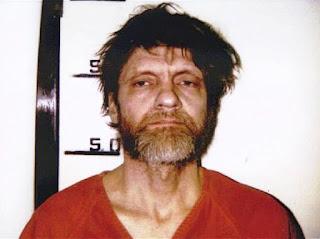
Allan: How did you first develop an interest in the Unabomber, and what are your impressions of the manifesto?
James: In 1970 I moved to a hunting cabin in the Adirondack Mountains to teach math at a small junior college in upstate New York. Coincidentally, Ted Kaczynski had just quit his teaching job at Berkeley and began to build his cabin in the woods just south of Lincoln, Montana. Of course, I knew nothing about this coincidence when it occurred; my main motivation to live rurally couldn’t have been Kaczynski, but was rather Dylan and The Band who had been living outside of West Saugerties, New York. (I must point out that Kaczynski was a math genius, his PhD dissertation was honored internationally. He went to Harvard and the University of Michigan, while I had a master’s degree from the University of Wisconsin- Milwaukee - very little coincidence here.) By the spring of 1971 I was fired from my teaching job for leading protests against the Viet Nam War; the president of the school was also the president of the John Birch Society in nearby Lake Placid. He hated me. When the science building (where my office was located) burned, the New York State Bureau of Criminal Investigation was called in. I was the first to be investigated. In the late 1960’s I had been involved in community organizing in a poor black/white ghetto in Springfield, Missouri, such qualifications made me a prime suspect. However, it was later determined that the fire had been set by a student member of the volunteer fire department. There had been no political motivation; he had just wanted to fight a fire. Unfortunately he picked a very cold day, all the hoses froze, and the building burned to the ground. I didn’t know the student.
But something else of interest happened during the investigation. When I agreed to take a lie-detector test, the Bureau asked me only a few questions about the fire and then switched their questioning to the bombing of the Army/Math Research building in Madison, Wisconsin where Robert Fassnacht, a student research assistant had been killed. It happened a week before I moved to upstate New York. They were very interested in knowing if I knew the Armstrong brothers, Karl and Dwight, Leo Burt, and David Fine, the four main suspects. I told them I did, but not well. By the end of a rather long interrogation, I learned that the four had been stopped only a few miles from my cabin. The cop had reversed some of the numbers on their license plate and unknowingly let them slip away. I passed the lie-detector test and was never questioned again.
When news of the Unabomber began to appear in the newspapers in the mid-1980’s, all but Leo Burt had been captured. Karl Armstrong got the longest sentence, 23 years, serving seven. Leo Burt was still on the loose and the talk amongst the old Madison garde was that Burt was either an FBI informant, dead, or he was perhaps the Unabomber; that, coupled with the fact that the first Kaczynski bomb exploded in May of 1978 at Northwestern University, made me interested. I had taught filmmaking at Northwestern from 1975 until the spring of 1977, when I quit.
As for the manifesto, I find it quite interesting, especially Kaczynski’s warning about how technology is systematically destroying autonomy, that is, autonomy for the important things in life, and I suppose, for life itself. Yes, this is a bit of a contradiction for me, for the computer has made me almost completely self-sufficient as a filmmaker; I no longer need the lab services that were essential in the past. But the bigger question is what have I given up, it can’t be good.
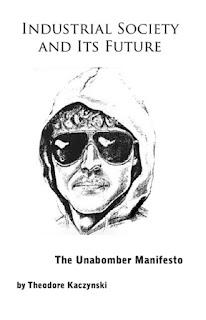
Being quite shy and spending much of my time alone, I found Kaczynski’s comments about the over-socialization of the left to be quite entertaining. What I don’t agree with (“In order to get our message before the public with some chance of making a lasting impression, we’ve had to kill people”) is the use of violence; nevertheless, I do understand his argument that if a government outlaws killing, and then uses killing as a way to assert itself, the equation is out of balance. This lack of balance is the major cause of terrorism. And since I pay taxes, I am already implicated in the killings my government performs routinely, be it Bush or Obama, or any other president since I began working.
Perhaps the most important part of the manifesto is Kaczynski’s definition of freedom. It is re-stated in the book (FC) Two Cabins by JB, edited by Julie Ault, my film, Stemple Pass, and now here:
“Freedom means being in control of the life-and-death issues of one’s existence: food, clothing, shelter, and defense against whatever threats there may be in one’s environment. Freedom means having power; not the power to control other people but the power to control the circumstances of one’s own life.”
Did you know Buckley Crist, the intended first victim at Northwestern University, or have any contact with the engineering department? How did you feel to learn that the bomb had gone off? Did you have any thoughts yourself as to who had sent the bomb?
The only person I knew outside of the film department, which was in the School of Speech, was an artist that did printmaking in the Art School, if they had an Art School, and I can’t remember his name. He and his young daughter are in the first shot of (Benning’s 1977 film) 11 x 14, he gets out of a green VW square-back carrying his daughter and walks toward the camera and exits the frame. I wanted the first movement in the film to address the camera. I can’t remember when I heard about the bombing, it wasn’t newsworthy when it happened, and by the time I found out, it had already been connected to the Unabomber.
Were you surprised at Kaczynski's identity?
Not really, by the time Kaczynski had been arrested I had heard stories of the FBI questioning people who worked at San Francisco’s Exploratorium (Museum of Science, Art and Human Perceptions), and a few artists, Don Evans, a Nashville filmmaker/artist who also did fireworks art, and Tony Conrad, who studied math at Harvard with Kaczynski. However, I don’t really know if any of these stories are true, but they were blowing around at the time.
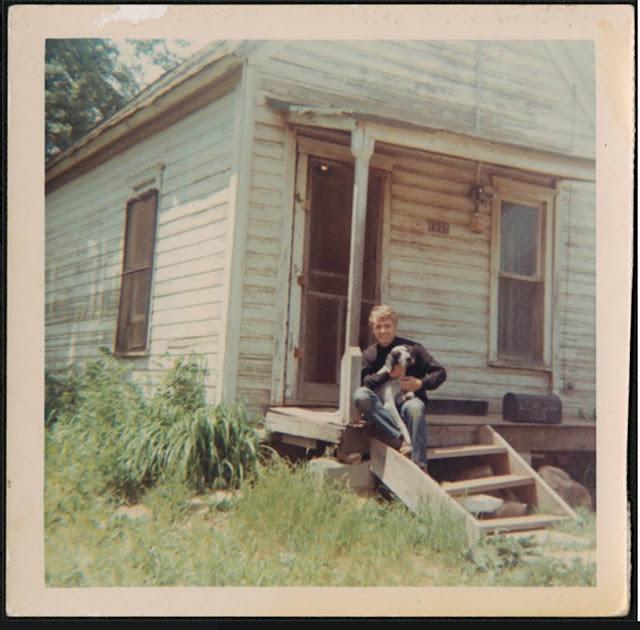
Courtesy of James Benning: "here's a photo of me sitting on the porch of my 'shotgun' house on North Texas Street in Springfield, Missouri, summer 1968 with my blue tic dog, Morgan."
Have you ever attempted to live off the grid for any length of time - hunting, farming, living autonomously? How was the experience?
I suppose I’ve lived off the grid a number of times. When I lived in Springfield, Missouri in that poor black/white ghetto that I mentioned earlier, I lived in a shotgun house, named for its architecture; if someone pulls the trigger of a shotgun at the front door, the pellets could travel through the three consecutive rooms and exit out the back without hitting anything– all the doors line up. But it wasn’t off the grid in the sense of electricity and water, I did have those things and there was a toilet in the corner of my bedroom, the center room (my neighbors had outhouses), but it was off the grid in other ways. There were no city services. People burned their garbage in 40-gallon oil drums along the railroad track that cut through our back yards. The day I moved away, I found an old black man dead behind my house. I told my neighbor about it and he ran and hid; he was afraid the cops would pin it on him. When the cops did show up they never asked me even one question, they just carted the body away. From there I moved to a cattle farm in the Missouri Ozarks and lived in an old farmhouse along the Osage River, which I imagine was a lot like living in the 1930’s during the Great Depression. And then a few years later I lived in upstate New York where I was really off the grid. I had no electricity, water came from a well powered by a gasoline engine that filled a horse-trough near the roof and the water flowed through the pipes using gravity. There was no hot water. I used a Coleman lantern for light and heat was supplied only from the fireplace. I burned almost 20 cords of wood that winter, the coldest in recorded history; we had 40 below zero for fourteen straight days, and the snowfall was also a record, just shy of thirty feet. It drifted completely over the cabin and I had to dig tunnels to enter the door and to let light shine through the windows. Every morning I had to snowshoe out two miles to get to work.
You had mentioned that you got access to Kaczynski's journals when a friend of yours bought all of them in the auctions a few years ago. What was reading them like?
Yes, I met Danh Vo through Julie Ault, they both came down to Buenos Aires to see a number of my films that were at the festival there. He’s also visited me in the mountains a few times and when he heard that Julie and I wanted Kaczynski’s journals, he came up with the money and bid on them with a real commitment. At the same time he bought Kaczynski’s typewriter, and gave the journals to Julie. He said to me he was very interested in what I would make from them. He, himself, used the typewriter to write the invitations for the first showing of his replicated Statue of Liberty piece in Kassel, Germany. I was staying with a friend in Tivoli, New York and Julie brought them up from New York City for me to read. They’re amazing. I know of no other person who has lived outside of the mainstream, and now any steam, like he has. His focus is completely unique.
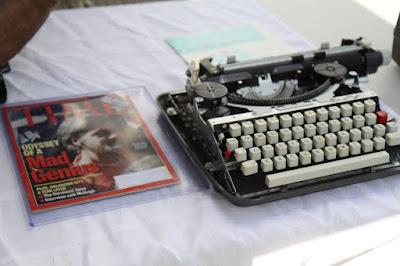
Did you know at the outset that you wanted to do a film about Kaczynski? (Had you begun the Cabins Project at that point?).
The Cabins Project was well on the way by the time I read Kaczynski’s journals. Julie’s main reason for getting the journals was so they wouldn’t be exploited, at least in a sensational way. She wants to archive them in a proper way. We both believe they hold important truths, especially about being on the outside. I really hadn’t intended to work with them, but Danh’s challenge made me think that perhaps I could do something with them that wouldn’t exploit and would be meaningful.
You've said that, in selecting passages to read for the film, you wanted to "give an overview of the kinds of things he was writing about," but were there other criteria involved? (Does the fact that a quarter of the film's narration focuses on his survival in the wilderness reflect that a quarter of his writing deals with these themes? Is that true for other themes touched on...?).
Well, it isn’t quite that analytic. But for me it seems to represent percentages that are true, however, a lot of the journals focus on everyday needs for survival, so perhaps the more sensational is a bit out of balance. It is true that the later journals become more political, that is, his anger gets focused more toward technology.
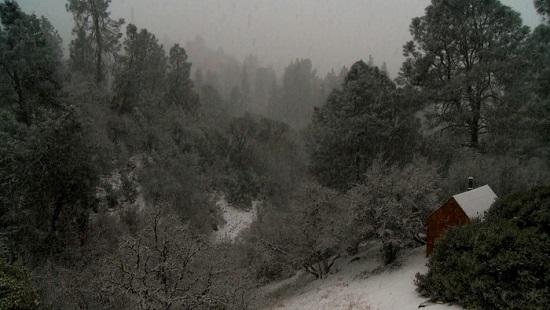
I'm particularly interested in the passages where Kaczynski speaks about how his motivation for crimes and acts of sabotage isn't ideological or driven by a desire to change society, but driven by a desire for revenge against society, for having deprived him of autonomy. Also struck by his more hateful-seeming writings about wishing he could inflict more damage than he did - wishing that the wires he strung across trails would behead people, for example. Can you talk a bit about your motivations for including some of this more vicious/ pathological thinking in the film? Since it seems that much of that was hidden or coded, were such things not really representative of the bulk of his writing?
What I include and the order that it occurred is very important to understand how Kaczynski became more sophisticated and determined to fight against technology, to bring about revolution. As I see it, in the beginning he was just angry, or at least only made his anger apparent, but later his political conviction, to destroy the technological society before it destroys us, becomes highly focused.
I 'm very curious about the whole story of Ted Kaczynski as an "MK ULTRA victim," as his brother David has described him. But nothing about MK ULTRA or, as I recall, Ted Kaczynski's time at Harvard, makes it into the film. Was anything relating to such material included in the journals? Is this an aspect of his history that you've researched or have an opinion on?
Kaczynski never mentioned Dr. Henry Murray once in any of his journals. This can be interpreted in two ways, neither of which I’d want to comment about. It would only be speculation. And the journals I’ve read start when he moved to Montana in 1970, after he had been away from Harvard for at least five years. In the manifesto he does refer to mind control, but never Murray in particular.
Was anything too upsetting, too strange, too personal, too hateful, too digressive, or too surprising to be included in the narration? Were there things you wished you could include, but didn't?
No, his journals are very honest. I am of the opinion that Kaczynski cannot tell a lie. The problem I had was should I make this film at all. Once I decided that his journals were important, and that I should make this film, I never censored anything, but tried to give an honest rendering of what I had access to. I saw it as a great responsibility to everyone involved.
One of the Unabomber's victims, David Gelernter, has said that he finds "the idea of the auction [of Unabomber-related material, including the journals, to be] revolting, sickening, profoundly despicable," expressing concerns that the result would be a "P.R. Bonanza" for the Unabomber. (See here for the full context). Gelernter also appears in Lutz Dammbeck's film, The Net, where - somewhat tastelessly ambushed by Dammbeck - he says that "Once a man is a murderer, I don’t give a damn what his opinions are.... What I know about him is that he’s a murderer, a creator of pain and suffering, and his opinions are disqualified from being of interest to any civilized human being." I disagree, myself - I think Gelernter's view is a variety of ad hominem argument, though I understand why he feels that way. But would you care to comment on this - and on two possible areas of concern: were you concerned that Stemple Pass would play into any sort of "publicity" for Kaczynski and his ideas, and/or were you concerned not to be insensitive to his victims? Did these considerations affect your choices as a filmmaker?
I understand Gelernter’s argument, but I just don’t agree with it. As I said earlier, our government involves us in murder almost on a daily basis, we’re all implicated, Stemple Pass is hopefully making us aware of that fact. And I’m hoping it also is making us aware of Kaczynski’s arguments against technology, which I believe should be both considered and debated.
Have there been any reactions from Kaczynski, his brother, or any of the Unabomber's victims to the film? Are you concerned about "fallout" from having made this film - personal repercussions or unintended effects?
At first, I’d only heard from Kaczynski indirectly. He at first wished me a place in hell, but later withdraw that opinion. Since then he directly wished me a happy birthday, and as he put it, whenever that may be.
Has Kaczynski actually seen Stemple Pass?
No he hasn’t seen it, nor would I want him to; although I think it is a rather neutral reading of him, his actions, and his ideas, I’m sure he wouldn’t approve. But of course I didn’t make the film for him, I’m rather using him to ask what I think are rather important questions. It goes without saying that I didn’t and don’t approve of his killings, but he does have important things to say, and it might surprise you to hear me say that I have compassion for him, he is a human being.
By what means did he wish you a happy birthday? (Is he allowed, given his past crimes, to send mail?)
Julie Ault has been corresponding with him for almost three years now. I would ask him questions through her. Last May I sent him a birthday card, see attached; and he sent me a postcard saying:
From
THEODORE JOHN KACZYNSKI
04475-046
U.S. PENITENTIARY MAX
P.O. BOX 8500
FLORENCE, CO 81226-8500
5/27/13
Dear James,
Thanks for the birthday greeting.
Happy birthday to you too—
Next time you have a
birthday
Ted Kaczynski (signed)
Yes, he is allowed to send and receive mail, of course everything is monitored, and I’m sure my name is now on a FBI watch list. I believed he also earned the right to have a TV in his cell, but refused. He is very busy researching and writing.
I've likened watching your films to meditating in nature, in that they pose some of the same challenges - staying focused, staying quiet - but the mind wanders no less, or seeks the most "active" visual elements as a point of focus, like the smoke from the cabin... is there a "right" way to view your films? Can you recommend how an ideal viewer might approach viewing Stemple Pass?
Oh, I’d rather not answer this question. It is a question for the viewer, not me. By the time the films are in a theatre or gallery, this becomes their responsibility, it’s not for me to say.
Out of curiosity, do you meditate, or otherwise spend quiet time in nature?
No, I’m always working, that’s how I deal with anxiety. In the early 1970’s I had acute anxiety bought about by a bad drug experience. My doctor wanted to put me on more drugs, I immediately stopped going to see him. I haven’t taken any drugs since and literally worked my way through it; I became a workaholic. After about three years I was normal again. I’m very pragmatic. Malcolm X was right when he said drugs are anti-revolutionary. Life isn’t that complicated.
How do you feel about people altering their states for your films? I had a great time watching RR (Benning’s railroad film) with a friend stoned - the sound was amazing, and the film was much funnier than I'd expected, some of which I don't think I would have noticed without enhanced perceptions…
As I said, drugs are anti-revolutionary.
How do you approach your landscapes? Do you, for instance, when choosing a location to film, set yourself a length of time to quiet the mind in the space, to take it in?
I like feeling myself being in a place. I like moving through it. I want to feel its dimension. I like paying attention to it. My mind is quite active. It really isn’t about meditation at all; I see meditation as being more of an escape. Paying attention, close attention, is about learning, not hiding, about being alive.
If meditation is the wrong description to describe the sort of attention you’re interested in… is there another word we should use? (I knew a Lakota Sioux who used to talk about the importance of “paying attention”…).
Yes, this is where language may fail us, and you’re right, all native cultures are close to the land, for the land teaches how to pay attention, otherwise you might die. Rather than meditation, it’s necessity. The Anasazi in Chaco Canyon keep track of the yearly movements of the sun and the 19-year cycle of the moon by casting a dagger of light across a petroglyph of a spiral. That was around 900 A.D. Discovering a 19-year cycle of movement takes commitment and probably more than one generation of life. They also were able to build a rather sophisticated culture in one of the harshest environments on this planet, and then around 1000 A.D. they vanished.
Can you break down how you time was apportioned in making Stemple Pass? How much time did it take you to read the journals, build the cabin, prepare for the shoot, shoot the film, read the narration? Was there anything time was spent on - either in pre-production or post-production - that might not be apparent from the finished project?
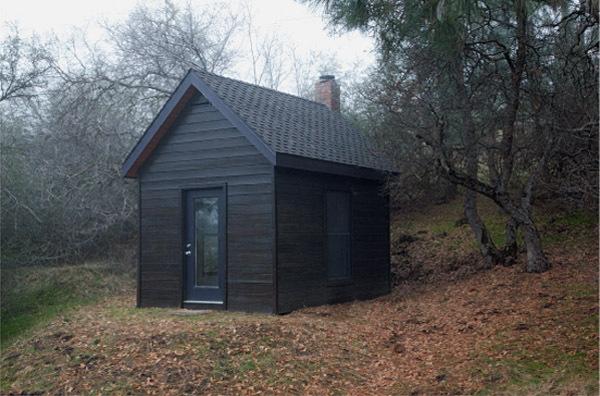
(James Benning's Thoreau cabin reconstruction)
This is an interesting question, because the Two Cabins Project didn’t start as art. It started as a construction project; I wanted to build a small house and Thoreau’s cabin at Walden Pond immediately came to mind. It was small and manageable. When I finished building it I hung some of my paintings inside and it began to resemble art, but it seemed too cute, and I thought it needed a counter-point, like when I added Arthur Bremer’s diary to my film American Dreams, juxtaposing Bremer with Henry Aaron, and I was in a building mood, so I made another cabin, Ted Kaczynski’s. The two cabins took a little over a year to build, from June 2007 through July 2008. There are paintings in both of the cabins, a library of 120 books in the Kaczynski cabin (half from my library, half from the inventory of books found in Kaczynski’s cabin when he was arrested). The Thoreau cabin has a fireplace, and the Kaczynski cabin has a wood stove (hence the smoke in the second shot of Stemple Pass). This year I built beds and tables in both cabins copying the originals of Thoreau and Kaczynski. The project is ongoing, it also includes a book edited by Julie Ault, (FC) Two Cabins by JB, A.R.T. Press, New York, and three films, Stemple Pass, Nightfall, and Two Cabins (which is also an installation that showed at my gallery in Berlin, neugerriemschneider), and of course now a museum show here in Graz. It took most the summer of 2011 for me to study the journals, a part of the fall to decide what of them I would use, and then in winter about two weeks to record myself reading the text. I did the recordings inside the Kaczynski cabin; I wanted a certain feel to my performance, while remaining neutral. So I had the recordings finished before I completed the shooting. I began shooting the film before I even knew that Kaczynski’s journals would be available (the FBI auction was on June 2, 2011). I shot on four different days for the whole film: May 15, 2011 (spring), August 22, 2011 (summer), November 12, 2011 (fall), and March 25, 2012 (winter). Yes, I know March 25 is actually spring, but in the mountains there’s still another month of winter.
You stumble on a couple of words in reading the narration, and it struck me that instead of doing what some would do - going back and redoing it til it’s perfect - you just continued on, leaving your stumbles audible. It strikes me that this is probably revealing of your method and mindset, but I’m not sure what it reveals…
Well for me it reveals a number of things, first and foremost that I was traumatized in grade school when I had to read out loud in class, something I never really got over; it took me a long time to do these recordings, even though I almost knew the text by heart. Some sentences I read ten times before I’d get though without a mistake, I make hundreds of mistakes. But with ProTools it took little time to make the recording perfect. And that’s what I did at first, made the readings void of any mistakes. But I didn’t want to be a voice of authority so I brought back 13 mistakes and used them to subtly comment on my relationship to what I was reading at the time of the mistake, after all, some of it was making me nervous. So in a way it provided me a vehicle to comment on myself without commenting on the text.
What technology did you use to make Stemple Pass? (I'm particularly curious about the rain; I believe I have read that rain shows up poorly unless it is lit in some way. Do I presume that that was real rain? Did you light it?).
I use a Sony EX-3 digital camera (1080 x 1920) and shot at 25p and edit in Final Cut Pro 7. The camera likes low contrast light, not harsh sunlight, although in post you can correct contrast, something I could never do in 16mm filmmaking. I waited for the kind of light my camera likes and shot on those kinds of days, it’s a matter of learning the differences of HD and then taking advantage of those differences. All four shots are in natural light.
The paradox you mentioned earlier, of relying on technology to make a film like this - this seems central to your work, though it's hard to put into words. It strikes me as very, very strange that I would much rather spend two hours watching 13 Lakes than spend two hours sitting quietly at a lake. If the goal is, at least in part, to quiet the mind and perceive nature, doing it through the medium of film is an oddly secondhand, oddly unnatural way of doing it. Still, somehow it seems that I can use my mind much more effectively, can focus better with the film than if I'm just outdoors... can you make sense of this for me? What is it about film and/or the mind that makes it so much more enjoyable to take in a natural environment when filmed?
It’s two things, one I have done all the work, drove 10,000 miles to film thirteen lakes at particular times of the years and in particular kinds of light so you see the lakes on a better than average day, or at what I think are their perfect times. And two, you have accepted a contract with the film screen that is much stronger than the non-contract you have with the real, that is, when you go to a film, you have already accepted the notion of sitting and watching, in one direction and at one place. So the answer is that you are both lazy and not disciplined enough to have the real experience, which of course would always be better. The making of my films is always much more important to me than the films themselves.
Re: the "contract" with the viewer.... It strikes me that more than any other filmmaker I have encountered, the nature of the contract with you requires your films be viewed projected in public; watching your films on home video, where there is the option to pause the film, seems in some way to defeat the purpose. Would you agree?
Yes, I would agree with this, however, I’m hoping that as people become familiar with my work, both the films and installations, that they will eventually learn how to watch them, that is, I hope the work itself teaches the viewer how it should be seen, and in turn, teach them the discipline of paying attention. Elegant solutions take time. Observation is a most important skill.
On a related note, would you support a DVD or Blu-Ray anthology of your films?
Yes, there are already seven titles available (American Dreams, Landscape Suicide, El Valley Centro, Los, Sogobi, RR, and casting a glance) from the Austrian Film Museum in Vienna. About five or six years ago I gave my entire archive to them. I very much both admire and respect Alex Horwath, the director and long-time friend. He and his staff have been great supporters of my work and are slowly archiving everything, even making 35mm protection prints, and a by-product of the archiving includes making DVD’s. Very soon, Deseret and Four Corners will also be available. In the past I was against having my films on DVD, but since it’s so hard to see them, and because home viewing systems have improved greatly, and because many of the people that want to see my work know it takes discipline, I am now willing to make the work more available.
Do you rewatch your films, once they’re completed, or do they cease to be useful to you once they’re made? Do you ever watch them with audiences?
I always watch a film of mine when it premieres. My good friend Michael Snow always watches his films whenever he is a visiting artist, I am most impressed by that. I’m not that diligent, but if I'm at a public screening I do watch them more than 50% of the time, and I always watch if I haven’t seen the film in years, that is when it is most useful. I’m sometimes surprised by the juxtaposition or articulation of an edit. But I never watch my films by myself once they are finished; I don’t consciously go back to study them. Usually my films grow into each other, I continue ideas from one film to the next, so it is good for me to get to know my films in a theatre away from the editing table, or now, the computer. It’s important for me to see them big and with a good sound system.
Do audience responses to them have any interest for you? People I spoke to all agreed that Stemple Pass goes by much faster than they expected it would - that they were surprised when it ended (“was that really two hours long?”).
I never consider the audience when I’m making a film; that would make me too self-conscious. When I first showed 11 x 14, I lost three-quarters of the audience at almost every screening. When I show it today it’s packed and no one leaves. I keep making films in spite of audiences, I don’t want to make another good film, there are too many of them, I want to make radical work that adds to a discourse. But I also must admit I’ve been getting very intelligent audiences for some time now. I’ve gone to every screening of my film Nightfall (2012, although the credit says 1942), it’s a 97 minute film, just one shot, there is no movement in the frame for the entire film, only the light changes, and in every screening it’s been a group Zen experience. No one even moves, it’s so thrilling to see film work this way.
What projects are you working on now?
I’ve decided not to make any films for the next few years. I want to write a novel. There will be only one character, who is observed over eight decades. In each decade there will be just one event representing the everyday to measures of life and death. The person being observed keeps a diary, so the reader will always read about the same thing twice, first from the observer and then from the diary. It’s very structural.
